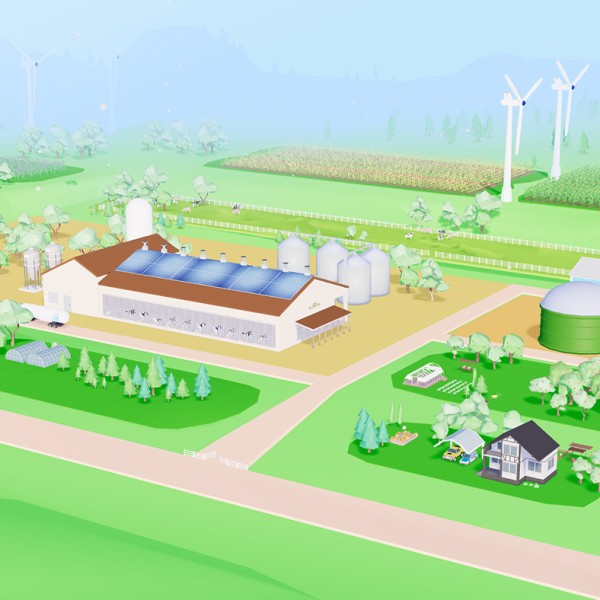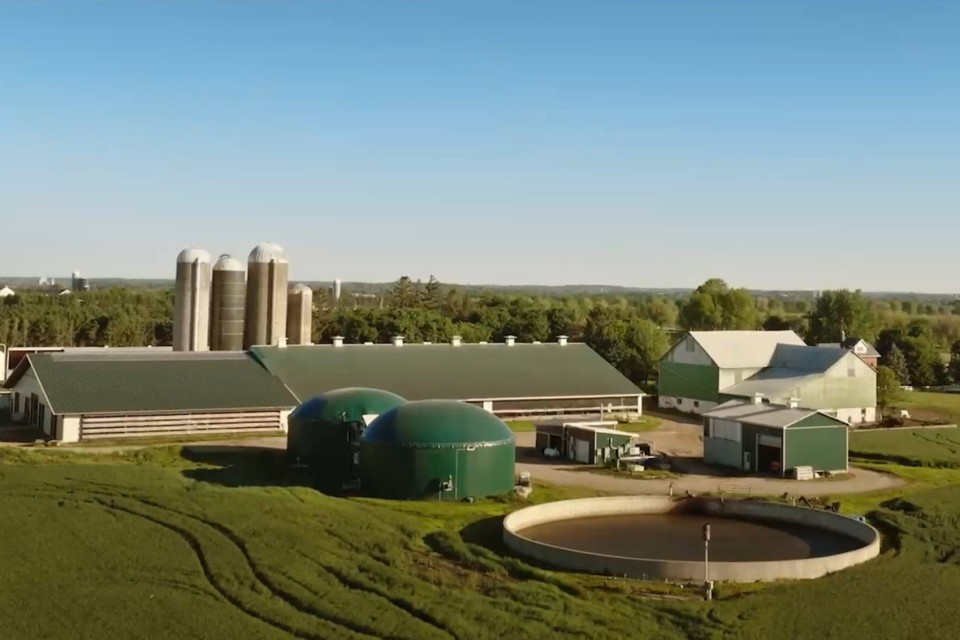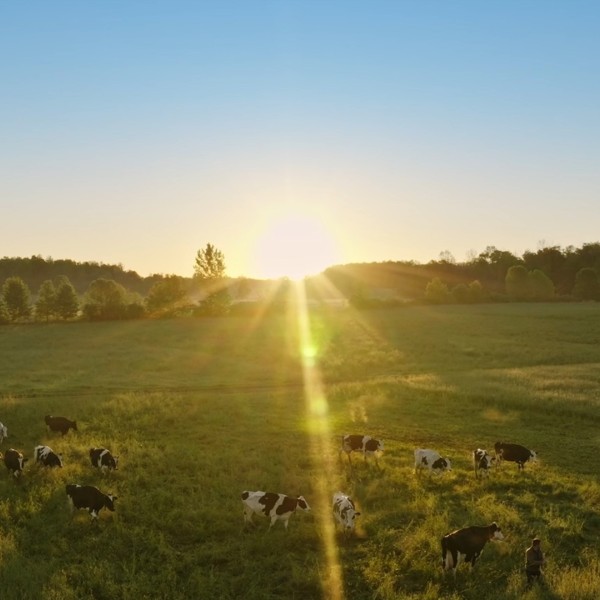The Secret to Sustainable Fertilizers
Dairy farmers have an abundance of natural fertilizer – manure. Did you know the various ways they store and apply it to the land offer opportunities to lower the farm’s carbon footprint? Learn more about these options that help reduce emissions from manure.

What does manure have to do with soil health?
Manure can do two things for soil health:
- it offers essential nutrients for the plants to grow strong and healthy.
- It also increases the potential for that soil to sequester carbon from the atmosphere, and adds a diversity of carbon to the soil in the dairy farmers’ fields.
All organic matter – from manure to plant residue and bedding of straw or shavings - supports crop growth and supports a closed-loop nutrient cycle between cows, soils, crops and feed rations on the farm. Organic matter fosters a diversity of the soil’s life – from microbes to beneficial worm and bugs - regenerating the health of that soil.
What does the “Circle of Life” mean on sustainable dairy farms?
Sustainable agriculture includes the ability to complete a full circle when cycling nutrients from crops to animals and back to the soil to grow the next crops. This cycle can be known as the Circle of Life or the Nutrient Cycle.
When manure is applied to land, it increases the potential for that soil to sequester carbon from the atmosphere, as it fosters a diversity of the soil’s life – from microbes to beneficial worm and bugs - regenerating the health of that soil.

Canadian Dairy Farm Discovery
Explore Now
How does the choice of manure management impact a farm’s carbon footprint?
The best scientific estimate we have at the national level in Canada is that emissions from manure represent up to one fifth (18%) of a farm’s footprint. Different farms have different manure storage and management techniques, and the choice of these techniques will impact each individual farm’s footprint.
Four techniques have been studied that lead to a reduction of greenhouse gas (GHG) emissions in this area.
These eco-friendly ways farmers can handle manure on their farms are:
- Biodigesters that capture GHG from the manure to make renewable energy.
- Separating liquid and solid and composting the solids.
- Covering the liquid manure pit with straw to create a barrier.
- Fully emptying the pit when spreading manure on land to fertilize it.
How do biodigesters work?
The innovative “biodigester” reduces methane emissions from manure by up to 60%. The methane produced during anaerobic digestion is captured and used as an energy source, while the digested organic material provides a rich fertilizer for plants, with odours reduced by up to 90%!
When considering whether to invest in this technology, farmers will consider the number of animals and access to other sources of organic waste products in their cost-benefit analysis. Biodigesters can be expensive, but the associated GHG-reducing benefits are substantial.
What are the benefits of composting manure?
Separating solids from the liquid manure and composting the solid parts is a manure management practice that has the potential to reduce overall methane emissions by about 30%! Composted manure is also much less odorant than fresh manure. In case studies such as this one, Canadian scientists have estimated that a farm switching to a manure- compost system has reduced its carbon footprint by about a third.
Being able to apply liquids and solids separately on farmland, allows a farmer to be more precise when applying different nutrients plants need. Farmers know that healthy, living soil means healthy plants – contributing to overall sustainability and resilience to climate change. There is a lot more than meets the eyes when it comes to using manure to fertilize plants, including testing the soil to determine where, when, and how much is the right move.
Can a layer of straw on a manure pit really make a difference?
A straw cover or crust on top of a manure storage reduces some GHG emissions from manure by creating a physical barrier – reducing up to 15%. When temperatures fall below freezing, manure freezes and the cold and snow acts as a natural top barrier, trapping GHG underneath.
How does emptying manure storage tanks impact GHG emissions?
A surprising, yet interesting, way to help combat GHG emissions is to completely empty manure storage tanks when it’s time to fertilize fields. Emptying a liquid manure storage tank eliminates the aged manure inside and reduces emissions from the newly loaded manure in the following months by up to 40%! Even emptying the tank to 5% of its total volume of manure will reduce methane emissions.
Can different ways of applying manure on fields make a difference?
Farms apply manure on lands through surface broadcast or injecting it in the soil. Incorporating it rapidly in the soil is recommended, but when all is considered, it may have a bigger impact on odours than overall emissions.

Net Zero by 2050
Learn MoreSources
Manure Management Practices to Mitigate Greenhouse Gases. (2020). Agriculture and Agri-Food Canada, University of Guelph and Dairy Farmers of Canada. https://www.dairyresearch.ca/userfiles/files/Fact%20Sheet_Manure%20Management%20Practices%20to%20Mitigate%20GHG_May%202020-1.pdf